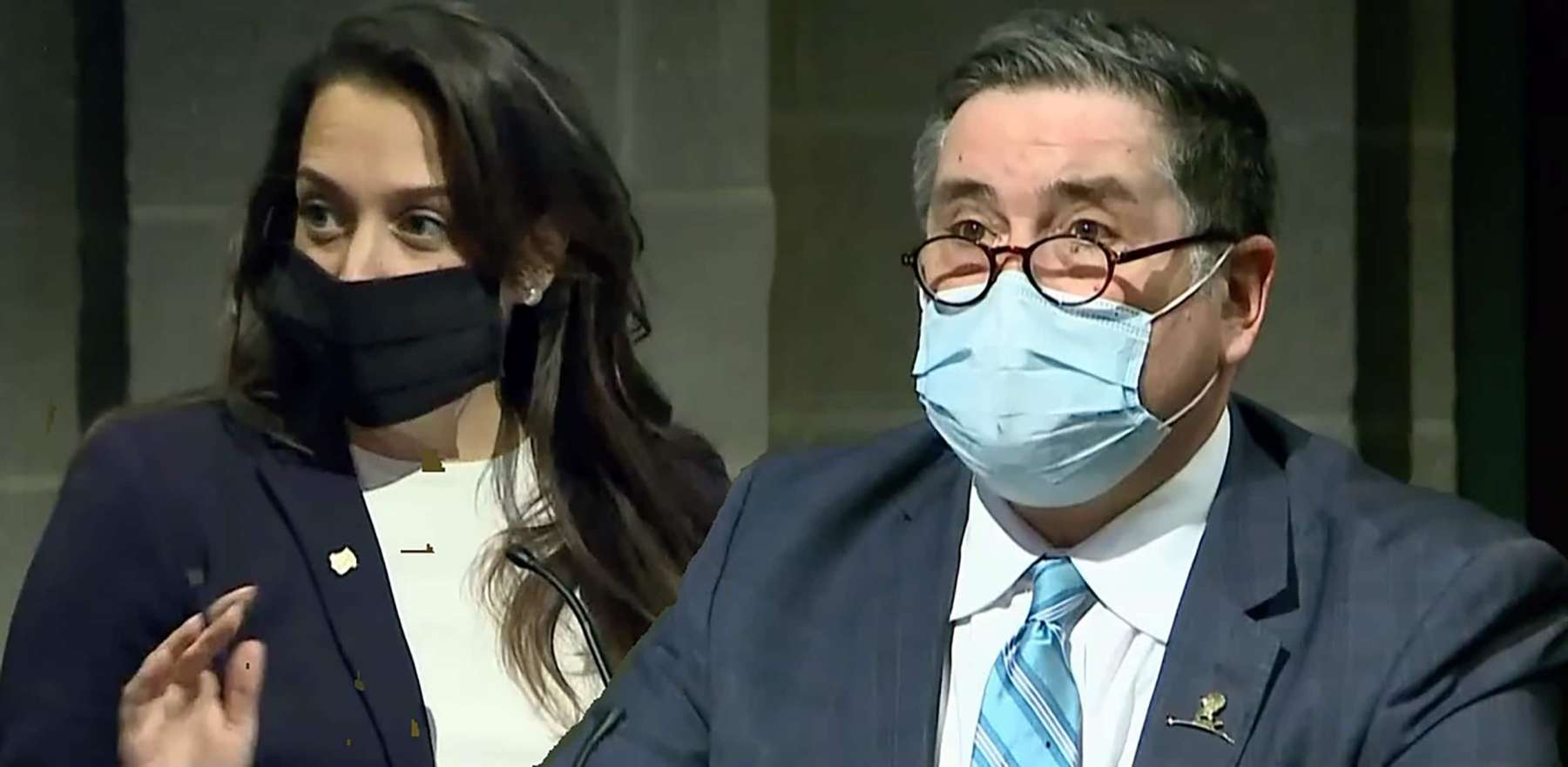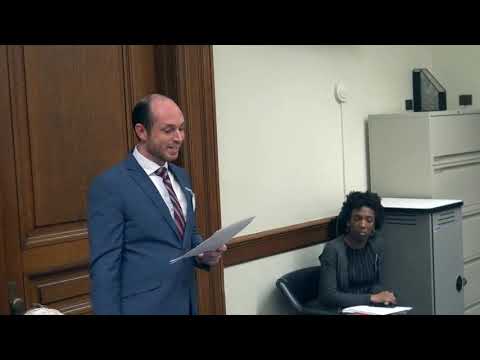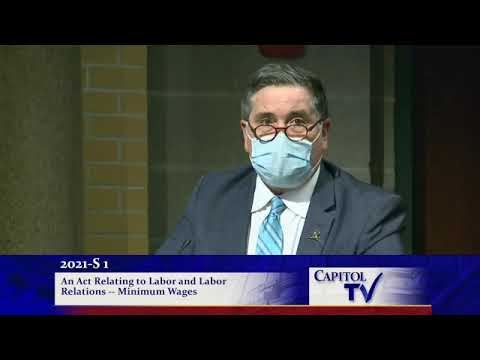Assessing the claims of anti-minimum wage lobbyists
When our elected representatives allow themselves to be deceived by the self serving claims of lobbying organizations like the NFIB at the cost of the people they represent, they need to be held accountable.
February 11, 2021, 4:45 pm
By Steve Ahlquist
The National Federation of Independent Business (NFIB), the largest small business association in the United States, claims to be non-partisan, but in truth it leans towards anti-worker, right wing, pro-corporatist views on a variety of issues. In 2010, for instance, 25 NFIB members were elected to Congress, all Republicans, many affiliated with the Tea Party movement. In 2012 the NFIB was the only business association to challenge President Barrack Obama‘s Affordable Care Act in the United States Supreme Court. Perhaps stung by the fact that their opposition to Obamacare failed to overturn most of the statute’s provisions, in 2017 the NFIB supported the nomination of Supreme Court Justice Neil Gorsuch.
Locally, the State Director of the NFIB is Christopher Carlozzi, who lobbies the Rhode Island General Assembly on a number of issues, including the minimum wage. Carlozzi has been consistently opposed to raising over the years, no matter how good or bad Rhode Island’s economy is doing. We seem to always be just coming out of a recession, about to fall back into a recession, facing a pandemic or some other economic disaster that will hurt small businesses more than it will hurt already struggling low-income families and working mothers.
How much is Carlozzi paid to make advocate against low-wage workers making more money? $10,500 a month according to the Secretary of State’s office. Here’s Carlozzi earning some of that money testifying in the House Labor Committee against a minimum wage increase just before the pandemic shut down the General Assembly last year.
When Carlozzi testifies against increasing the minimum wage, whether he does it through written testimony or testifies in person, he consistently relies on bad and disproven economics, and even when he uses decent economic studies, he misrepresents them and cherry picks his data.
Unfortunately, Carlozzi is convincing. During the Senate floor debate on raising the minimum wage on February 10, both Democratic Senator Frank Lombardi and Republican Senator Jessica de la Cruz cited Carlozzi’s written testimony to help justify their opposition to the bill.
I went through Carlozzi’s written testimony submitted to the Senate Committee on Labor on February 3 during the $15 minimum wage debate. Below, I pull out claims made by Carlozzi, and compare them to reality. As you will see, Carlozzi routinely misrepresents studies, relies on studies of dubious integrity, or makes claims that are either impossible to substantiate, completely fatuous, or false.
Carlozzi Claim 1:
“NFIB polled our members nationwide and found that a quarter of small businesses will face permanent closure if economic conditions continue in their current form.“
This “poll” has no meaning. Of course their polled members believe this. They are members of the NFIB, a group that panders to just these kinds of economic fears and beliefs.
Carlozzi Claim 2:
“Last year’s wage increase in October certainly arrived at an inopportune moment with the state’s economic pause occurring a few weeks later, closing many businesses across the state. The higher wage, coupled with the ‘pause’, was most likely a contributing factor to the state unemployment rate worsening from November to December.“
This claim seemed vague and impossible to prove, so I asked Alan Krinsky, Senior Policy Analyst at the Economic Progress Institute, to break it down for me.
“The claim itself is vague, with no evidence to back it up,” responded Krinsky. As for the claim that the the minimum wage increase was a contributing factor to the state’s unemployment rate, “it’s not possible to prove or disprove such a claim. I’m not sure how one would even be able to measure this.
“One would need a means of determining what the worsening of the unemployment rate would have been without the minimum wage change, but with the pause. Even if we tried to compare to unemployment rates in other states over the same time period, we would need to identify a bunch of other states that had a similar pause in place. If all these other states had a pause in place and the same rate of worsening unemployment, and Rhode Island had a rate that was even worse, then maybe one could make a claim. But one would need to be able to confirm that this minimum wage increase from October 1st was the only significant difference between Rhode Island and the other states.”
Carlozzi Claim 3:
“Even before the pandemic, studies demonstrate higher wages eliminate entry level positions, making it especially difficult for young people and those lacking work experience to enter the workforce. A 2018 report on the decreasing number of teens in the workforce by George Washington University’s Mercatus Center, shows higher minimum wages significantly contribute to higher teen unemployment. The research determined higher minimum wages meant fewer job opportunities for young workers.“
The Mercatus Center is a Koch-funded libertarian think tank, with a clear ideological bias.
A common bit of information used by anti-minimum wage advocates is that teens will be negatively affected, as the report from the Mercatus Center allegedly shows. But teens make up just under ten percent of minimum wage workers. Even if some teens were negatively affected by a minimum wage increase, the vast majority of minimum workers, over 90 percent of them, would be positively impacted.

On his podcast Pitchfork Economics, Nick Hanauer, venture capitalist and entrepreneur, talked about “how to tell you’re being fed a bullshit study about the minimum wage” and one of the first thing on his list was, Does the study emphasize teenagers?
“…our problem in the economy… is not that we’re underpaying teenagers,” said Hanauer. “Teenagers are largely in school. Our problem is we’re underpaying people in their mid 20s or early 30s who have low wage jobs.”
Carlozzi Claim 4:
“Seattle, an early adopter of a $15 minimum wage, released a study in 2017 after that city’s incremental increase to $13 per hour. It found that nine months after the second tier of wage hikes, about 5,000 low-wage jobs disappeared, the number of hours worked by low-wage workers dropped by 3.5 million hours, and their wages dropped by $6 million. While the consequences were unintended, the Seattle wage hike led to less money for workers and fewer job opportunities.“
Economically speaking, it’s safe to say that Rhode Island wishes it were doing as well as Seattle.
The study Carlozzi is referring to here (without citation, making it difficult to check his facts) was done with confidential payroll data that other researchers couldn’t easily avail themselves of for peer review. Multiple peer-reviewed studies using public data not only fail to show the employment effects reported in this study, they show increases in hours worked at higher paying jobs. The Washington Post talks about the problems with this study here.
Carlozzi Claim 5
“A second report in Seattle, released in October 2018, showed less experienced workers saw no significant change in weekly pay. While pay for more experienced low-wage workers rose $8 to $12 a week, a quarter of that increase came about because they made up for lost hours at other jobs outside city limits. There was less job turnover, but also a significant reduction in the rate of new employees entering the workforce. In other words, job opportunities for those with no skills and no experience disappeared.“
This later study, from the same researchers Carlozzi cited in Claim 4 above, refuted some of the findings from their previous study! But more importantly, all the economic data gathered since this paper came out shows Seattle to be a place of robust employment and a very healthy economy, Covid not withstanding. The New York Times reported that reading too much into this study is a problem.
Carlozzi Claim 6
“Researchers at Harvard University Business School and Mathematica Policy Research Institute released a 2017 study concluding minimum wage increases can play a role in restaurant closures, arguing that with every dollar increase in the minimum wage for moderately-priced, median-rated restaurants, there is a 14% increase in the likelihood of closure.“
Here Carlozzi misrepresents the study. What this study showed is that those restaurants that might close due to a raise in the minimum wage are restaurants with low ratings in customer satisfaction. In other words, bad restaurants might close when minimum wages go up, but highly rated restaurants are not affected by minimum wage increases. As for the 14% increase in the likelihood of closure, it applies only to restaurants rated 3.5 stars or lower. Finally, even the authors of the study say, “they don’t see the study as evidence for or against changing the minimum wage.”
Christopher Carlozzi and the legions of lobbyists NFIB and other anti-worker pro-corporate groups gets paid a hefty salary to spread this fear and disinformation and that money comes from business organizations claiming that they are unable to pay their employees a fair and equitable living wage. When our elected representatives allow themselves to be deceived by the self serving claims of lobbying organizations like the NFIB at the cost of the people they represent, they need to be held accountable.








